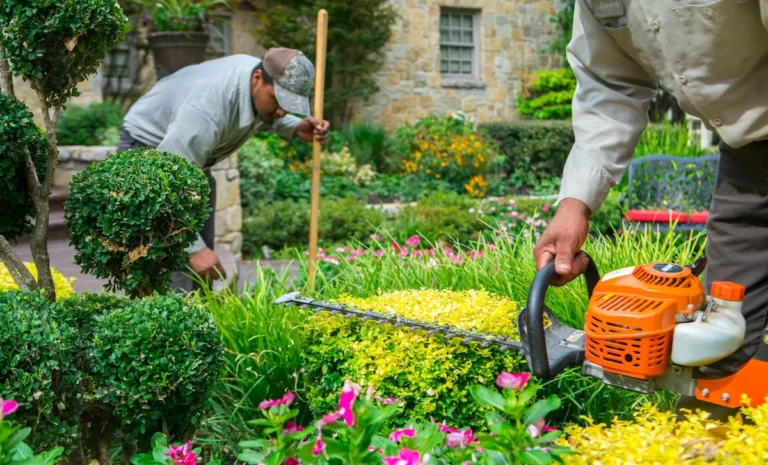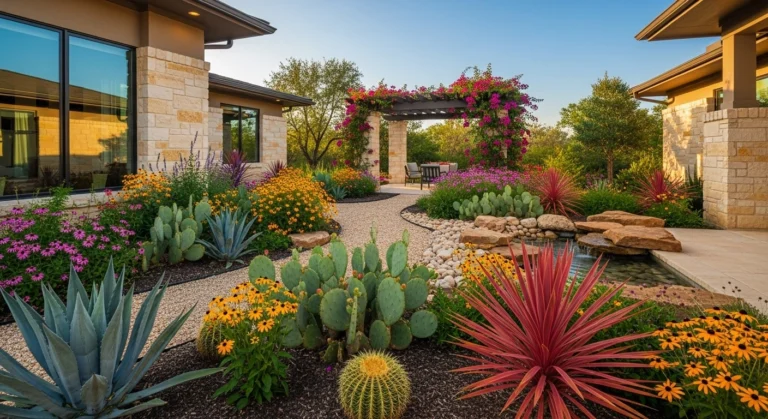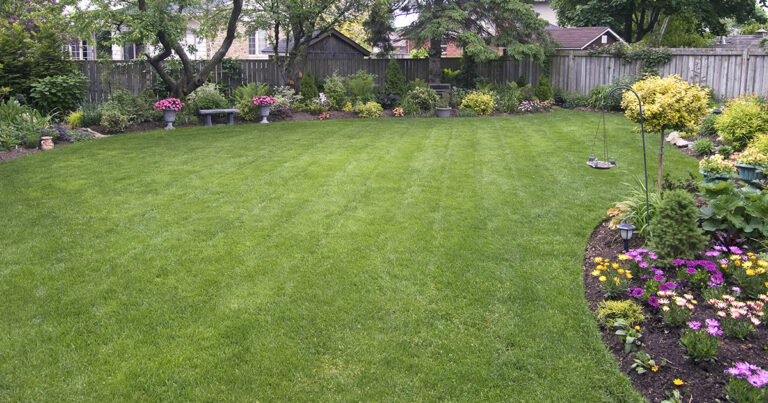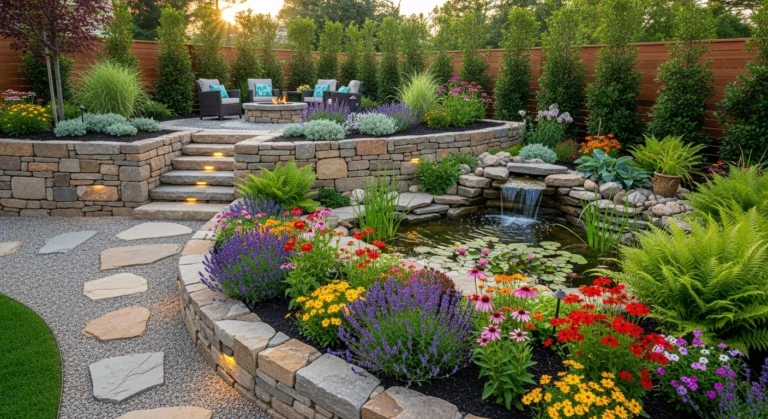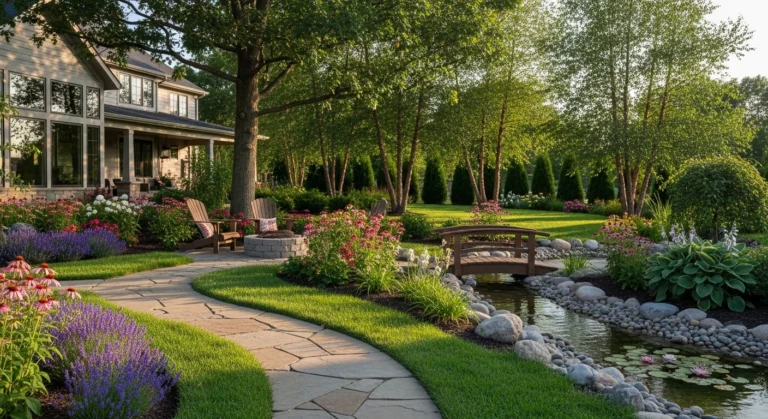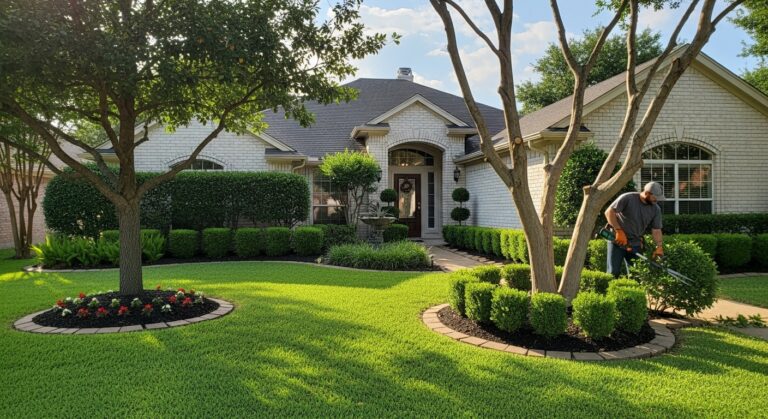Cold Weather Plant Defense: Winter Landscape Survival
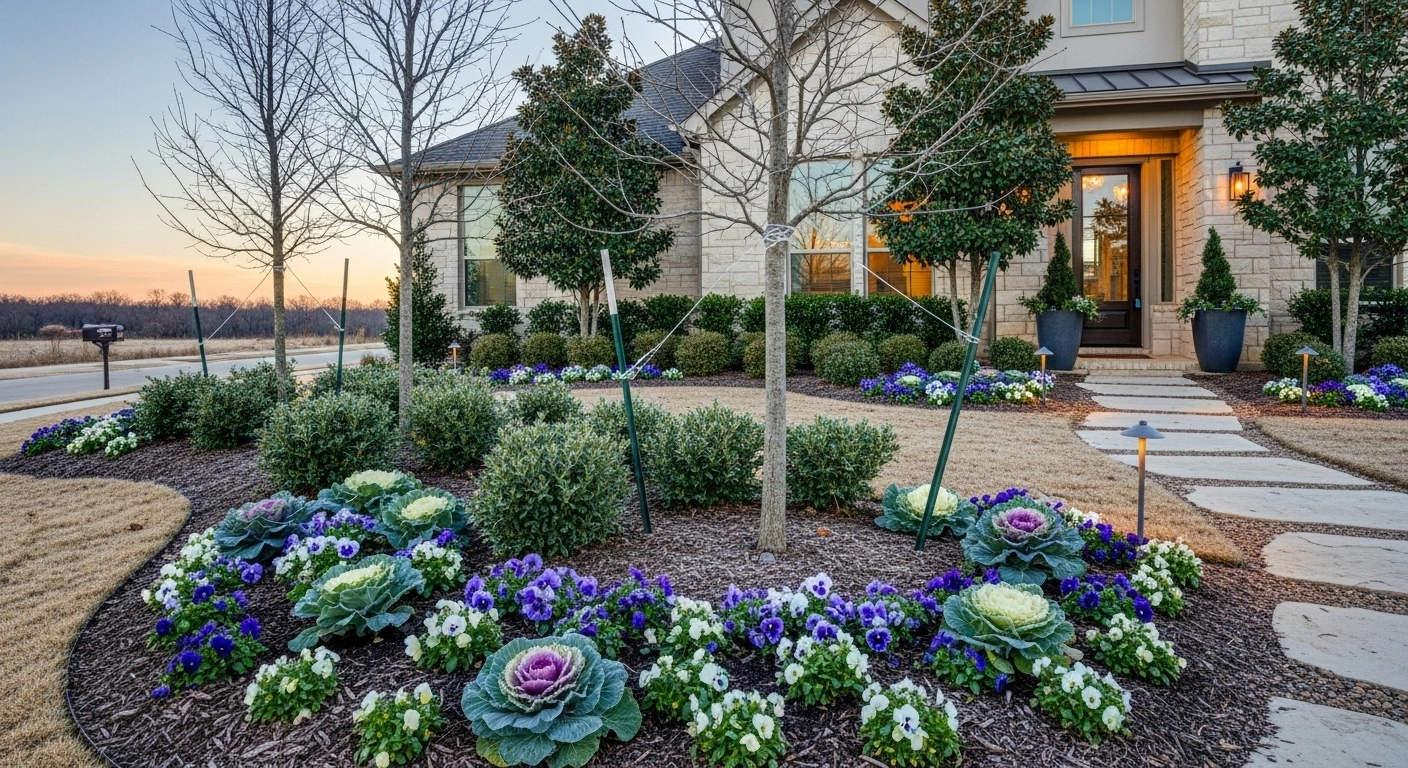
December rolls around in Central Texas and you’re nervously watching the weather forecast, knowing that one unexpected ice storm or arctic blast could turn your carefully maintained landscape into an expensive casualty list overnight. You’ve probably walked through your neighborhood after a hard freeze and seen the aftermath – once-beautiful palm trees with blackened fronds, prized rosemary bushes reduced to brown skeletons, and homeowners standing in their driveways looking shell-shocked at the damage. The frustrating part isn’t just the financial hit from replacing dead plants; it’s knowing that most of this destruction was completely preventable with some basic knowledge and preparation. Having spent over 17 years helping Central Texas families protect their outdoor investments, I’ve seen too many beautiful landscapes destroyed simply because homeowners didn’t understand what their plants needed to survive our unpredictable winter weather patterns.
The good news is that mastering winter plant protection doesn’t require advanced horticultural degrees or expensive equipment – it requires understanding your local climate, knowing which plants need help, and taking action at the right time. The landscapes that consistently emerge from winter looking healthy and beautiful belong to homeowners who’ve learned to work with Central Texas weather patterns instead of being surprised by them every year. Our Lawn Care Waco methodology focuses on building year-round plant resilience through strategic selection, proper timing, and targeted protection measures that actually work in our specific climate zone. When you understand the difference between plants that can handle our winters and those that need assistance, plus when and how to provide that help effectively, winter becomes a manageable season rather than an annual landscape disaster. The key is shifting from hoping your plants survive to ensuring they thrive, creating a systematic approach that protects your investment while keeping the workload reasonable and the costs minimal.
Central Texas Winter Reality Check
Our Brazos River valley climate creates winter conditions that catch both plants and gardeners off guard with dramatic temperature swings, sudden ice events, and unpredictable timing that makes planning challenging. We’re not dealing with gradual seasonal transitions – we face 70-degree Christmas days followed by 15-degree New Year’s mornings, creating stress conditions that even cold-hardy plants struggle to handle.
The damage patterns extend beyond simple cold injury. Rapid temperature fluctuations cause bark splitting on trees, while warm spells trick plants into breaking dormancy early, leaving new growth vulnerable to subsequent freezes. Ice accumulation creates physical damage through weight stress, and winter winds desiccate evergreen plants even when temperatures stay above freezing.
Understanding true plant hardiness versus nursery marketing claims prevents repeated disappointments and expensive replacements. Many plants sold locally are rated for warmer zones and cannot survive Central Texas winters regardless of protection efforts. The beautiful bougainvillea or expensive palm tree may thrive for months until the first serious cold snap reveals their true limitations.
Our Seasonal Landscape maintenance records show that strategically protected properties lose 75% fewer plants during severe winter events compared to unprotected landscapes. This difference represents thousands of dollars in prevented losses and significantly less spring replacement work.
Building Your Plant Defense Strategy
Assessing Winter Vulnerability
Every plant in your landscape falls into a specific vulnerability category that determines its protection needs during cold weather. Understanding these categories prevents both over-protecting hardy plants and under-protecting vulnerable specimens.
Recently installed plants represent your highest-risk group regardless of their ultimate cold tolerance ratings. Plants need at least one full growing season to develop the root systems and energy reserves necessary for surviving extreme weather stress. Even hardy natives can fail during their establishment winter without proper protection.
Your plant vulnerability assessment:
- Tropical specimens requiring protection below 35°F – citrus trees, hibiscus, bougainvillea, and palm varieties
- Mediterranean herbs and perennials that survive mild winters but fail during severe cold – rosemary, lavender, sage varieties
- Newly planted material less than 18 months old needing extra protection regardless of species hardiness
- Plants in exposed locations facing harsh winds or situated away from natural shelter
Microclimate variations within your property create dramatically different protection requirements. Plants located near south-facing walls or under protective tree canopies may thrive in conditions that kill identical specimens just yards away in exposed locations.
Strategic Protection Timing
Successful winter protection depends more on weather timing than calendar dates in Central Texas. Our variable climate makes rigid schedules ineffective and potentially harmful if protection materials are installed too early or removed too late.
Monitor extended weather forecasts beginning in late November, focusing on overnight low temperatures rather than daily highs. When forecasts indicate nighttime temperatures dropping into the upper 20s, it’s time to prepare protection materials and plan implementation strategies.
The “48-hour preparation window” maximizes effectiveness – begin implementing protection measures 36-48 hours before predicted severe cold arrives. This timing allows thorough preparation without last-minute rushing while giving materials time to settle properly before conditions deteriorate.
Your protection timing framework:
- Gather materials in early November so everything is accessible when weather threatens
- Implement protection when temperatures will drop below 26°F for extended periods
- Remove coverings during warm spells to prevent overheating and disease development
- Prepare for multiple protection cycles throughout winter rather than single installations
Don’t rely solely on official weather warnings – they often arrive too late for effective plant protection and may not account for specific microclimatic conditions in your neighborhood.
Effective Protection Methods
Choosing appropriate protection materials and methods determines success or failure of your winter plant defense efforts. The goal is maintaining stable temperatures around plants while allowing air circulation and preventing moisture accumulation that promotes disease.
Frost protection fabric provides optimal coverage for most temporary protection needs, offering 6-10 degrees of temperature buffering while allowing air and moisture exchange. Quality frost cloth can be reused for multiple seasons, making it cost-effective compared to disposable alternatives.
Proven protection techniques:
- Create framework supports to keep covering materials away from plant foliage – direct contact often causes more damage than cold exposure
- Secure coverings completely while maintaining airflow at ground level for circulation
- Use multiple light layers for extreme cold rather than single heavy coverings that restrict air movement
- Apply extra mulching around plant bases to insulate root zones from temperature fluctuations
Wind protection often matters more than temperature protection during Central Texas winter conditions. Installing temporary windbreaks using burlap or shade cloth on prevailing wind sides can prevent desiccation damage even when temperatures remain above freezing.
Strategic mulching provides long-term root protection by moderating soil temperature swings and preventing freeze-thaw cycles that can push plants out of the ground. Apply 4-6 inches of organic material around vulnerable plants, keeping mulch away from direct contact with plant stems.
Building Long-Term Resilience
Sustainable winter protection starts with appropriate plant selection rather than trying to baby inappropriate species through repeated cold events year after year. Choose plants rated for USDA Zone 8a conditions (our actual zone) instead of gambling on marginal varieties that require constant intervention.
Utilize natural microclimates already existing in your landscape to reduce protection requirements. South-facing locations near buildings stay significantly warmer than exposed areas, while spots under evergreen tree canopies receive natural wind buffering and temperature moderation.
Year-round plant health directly affects winter survival. Plants that experienced stress during Summer Landscaping months enter winter in weakened condition and become more vulnerable to cold damage. Consistent seasonal care builds the energy reserves plants need for winter endurance.
Our Landscaping Services installations emphasize climate-adapted plant communities that provide year-round beauty while minimizing ongoing protection requirements and maintenance demands.
Protection Strategies by Plant Categories
Protecting Trees and Large Specimens
Established mature trees typically need minimal winter intervention, but young trees and certain species require specific protection to prevent bark damage, structural failure, and root zone injury. Focus on understanding which problems affect different tree types and implementing targeted prevention.
Tree wrap prevents sun scald damage on thin-barked species like Japanese maples, fruit trees, and young shade trees. This condition occurs when winter sunshine heats bark during the day but temperatures plummet after dark, causing tissue damage that may not appear until spring growth begins.
Tree protection essentials:
- Apply tree wrap or white paint to south and west-facing trunk surfaces of vulnerable species
- Maintain mulch rings around tree bases to insulate surface roots from freeze-thaw damage
- Remove snow and ice loads carefully from branches, but avoid attempting removal from large trees
- Avoid deicing chemicals near tree root zones – salt and chemical deicers cause severe root damage
Never perform major tree pruning during winter unless removing storm-damaged or hazardous material. Pruning cuts made during cold weather heal slowly and provide disease entry points.
Caring for Perennials and Shrubs
Herbaceous perennials require different protection approaches than woody plants because they’re naturally designed to die back and regrow from root systems each spring. Focus protection efforts on crown and root areas rather than attempting to preserve above-ground foliage.
Allow natural die-back to occur on perennials that go dormant, but remove only diseased material that could harbor problems over winter. Many perennials benefit from leaving dead foliage in place until spring cleanup, as it provides natural insulation for crown areas.
Perennial protection methods:
- Apply heavy mulch layers over crown areas after natural foliage die-back occurs
- Mark plant locations with stakes to prevent accidental damage during winter yard work
- Delay cutting back marginally hardy plants until spring – dead material provides protection
- Group container perennials together in protected locations during extreme cold periods
Small shrubs benefit from strategic placement near larger plants or structures that provide natural wind protection and temperature buffering during severe weather events.
Container Plant Special Considerations
Potted plants face extreme winter challenges because container walls provide no insulation against temperature extremes that would never affect ground-planted roots. Container soil freezes solid during severe cold, essentially freezing plant roots in ice blocks.
Relocate moveable containers to protected areas like unheated garages, covered porches, or locations sheltered from prevailing winds. When movement isn’t possible, group containers together and surround them with insulating materials.
Container protection strategies:
- Wrap containers with insulating materials like burlap, old blankets, or bubble wrap padding
- Elevate containers off concrete surfaces that conduct cold directly to plant root systems
- Maintain minimal soil moisture without allowing containers to dry completely during winter
- Combine container and plant covering for comprehensive protection during severe events
Indoor plants summering outdoors need to be relocated inside well before first frost threatens – many tropical houseplants suffer damage at temperatures in the 40s, long before actual freezing occurs.
Winter Watering and Care Guidelines
Winter watering needs differ dramatically from growing season requirements, but completely eliminating irrigation can harm plants just as much as overwatering. Plants continue losing moisture through transpiration all winter, particularly evergreens, and may require supplemental water during extended dry periods.
Provide water during warm periods when soil temperatures allow absorption and air temperatures will remain above freezing for 24+ hours. Morning watering allows plant uptake before potential nighttime refreezing occurs.
Winter care guidelines:
- Water deeply but infrequently when conditions permit, focusing on newly planted and evergreen specimens
- Monitor soil moisture regularly – winter sun and wind can dehydrate soil faster than expected
- Avoid late-day watering when temperatures will drop below freezing overnight
- Check drainage around buildings to prevent ice dams and water accumulation issues
Natural ice formation around plants generally causes no harm unless weight becomes excessive. Gentle removal with lukewarm water helps, but avoid forcing ice removal that can damage plant tissues.
Post-Freeze Damage Assessment
Immediate reaction after freeze events often causes more harm than the original cold damage through premature pruning and hasty plant replacement decisions. What appears completely destroyed immediately after freezing may recover naturally with appropriate post-freeze care.
Delay major damage evaluation for 4-6 weeks after severe weather events. Many plants show temporary damage symptoms that resolve as temperatures moderate and natural recovery processes begin functioning.
Post-freeze response protocol:
- Remove only hazardous or obviously dead material immediately following severe weather
- Provide consistent water and care to stressed plants attempting recovery
- Avoid fertilizing damaged plants until active spring growth indicates successful recovery
- Document damage patterns for future protection planning and plant selection decisions
Scratch test bark on woody plants to check for green tissue underneath apparent damage – living cambium indicates potential for recovery even when foliage appears completely dead.
Avoiding Costly Protection Mistakes
Using plastic materials for plant covering creates more problems than protection by trapping moisture, preventing air circulation, and causing overheating damage during sunny periods following cold nights.
Hasty post-freeze pruning removes plant tissue that could recover naturally given time and appropriate care. Many plants that appear completely destroyed will regenerate from seemingly lifeless stems if allowed recovery time.
Late-season fertilization of cold-damaged plants stimulates new growth when energy should focus on recovery and healing rather than expansion.
Common protection errors:
- Installing covers too early during mild weather – traps heat and prevents proper dormancy development
- Leaving protection in place too long during warm periods – promotes disease and weak growth
- Using inappropriate covering materials that provide no insulation or air exchange
- Neglecting winter watering of newly planted and evergreen materials
Assuming all visible damage indicates plant death leads to unnecessary replacement expenses and premature landscape renovation decisions.
Connecting Winter Care to Year-Round Success
Winter protection effectiveness connects directly to care provided during other seasons, particularly the preparation work completed during Fall Landscape months. Plants entering winter in good health show significantly better cold tolerance than those stressed by neglect or poor seasonal care.
Document each winter’s lessons to improve future protection strategies and plant selection decisions. Track which protection methods proved effective, which plants surprised you with hardiness or vulnerability, and where your landscape needs better natural cold protection.
Plan permanent landscape modifications for areas consistently experiencing winter problems. Installing windbreaks, creating better microclimates, or replacing repeatedly damaged plants with hardier alternatives often proves more cost-effective than annual protection efforts.
Your winter protection planning should integrate with Spring Yard recovery strategies, creating comprehensive seasonal care cycles rather than isolated seasonal interventions.

